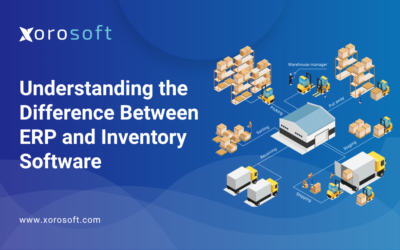
In today’s fast-paced e-commerce industry, efficient warehouse management is crucial for the success of any online business. A Warehouse Management System (WMS) is a software solution that helps streamline and optimize warehouse operations, from inventory management to order fulfillment. By leveraging technology and automation, WMS enables businesses to improve their operational efficiency, reduce costs, and provide a seamless customer experience.
The importance of efficient warehouse management in e-commerce
Efficient warehouse management plays a vital role in the success of e-commerce operations. In the highly competitive online marketplace, businesses need to ensure accurate and timely order fulfillment to meet customer expectations. A well-implemented WMS provides real-time visibility into inventory levels, allowing businesses to manage their stock effectively and avoid stockouts or overstocks. This level of control enables businesses to optimize their inventory, reduce carrying costs, and improve order accuracy.
Moreover, an efficient WMS enables businesses to fulfill orders faster, leading to shorter delivery times and increased customer satisfaction. With the ability to automate various warehouse processes, such as picking, packing, and shipping, businesses can significantly reduce order processing time. This not only improves operational efficiency but also enhances the overall customer experience.
Benefits of implementing a WMS in e-commerce operations
Implementing a Warehouse Management System (WMS) brings several benefits to e-commerce operations. Firstly, it enhances inventory accuracy by providing real-time visibility into stock levels, locations, and movement. This allows businesses to optimize their inventory levels, reducing carrying costs and minimizing the risk of stockouts or overstocks.
Secondly, a WMS improves order fulfillment efficiency by automating various warehouse processes. With features like barcode scanning and automated picking, packing, and shipping, businesses can significantly reduce order processing time and improve order accuracy. This not only increases operational efficiency but also leads to faster order fulfillment and improved customer satisfaction.
Thirdly, a WMS enables businesses to optimize warehouse space utilization. By providing insights into available space and suggesting optimal storage locations, businesses can maximize their warehouse capacity and reduce storage costs. This is particularly important for e-commerce businesses that often deal with fluctuating inventory levels and seasonal demand.
Overview of XoroWMS – a leading warehouse management system
XoroWMS, developed by Xorosoft, is a leading Warehouse Management System (WMS) that has been specifically designed to meet the unique needs of e-commerce businesses. With its comprehensive features and user-friendly interface, XoroWMS streamlines warehouse operations and helps businesses achieve operational excellence.
One of the key features of XoroWMS is its real-time inventory visibility. The system provides businesses with accurate and up-to-date information about stock levels, locations, and movement. This allows businesses to make informed decisions about inventory management, ensuring optimal stock levels and reducing the risk of stockouts or overstocks.
Another important feature of XoroWMS is its automation capabilities. The system automates various warehouse processes, such as order picking, packing, and shipping. By eliminating manual tasks and reducing human errors, XoroWMS improves order accuracy and significantly reduces order processing time. This leads to faster order fulfillment and improved customer satisfaction.
Furthermore, XoroWMS offers advanced analytics and reporting capabilities, allowing businesses to gain valuable insights into their warehouse operations. With customizable dashboards and reports, businesses can monitor key performance indicators, identify bottlenecks, and make data-driven decisions to optimize their warehouse efficiency.
Key features and functionalities of XoroWMS
XoroWMS offers a wide range of features and functionalities that help e-commerce businesses streamline their warehouse operations. Some of the key features include:
- Real-time inventory visibility: XoroWMS provides businesses with real-time information about inventory levels, locations, and movement. This enables businesses to optimize their stock levels, reduce carrying costs, and avoid stockouts or overstocks.
- Automation: XoroWMS automates various warehouse processes, such as order picking, packing, and shipping. By eliminating manual tasks and reducing human errors, businesses can improve order accuracy and reduce order processing time.
- Barcode scanning: XoroWMS supports barcode scanning, enabling businesses to track and manage their inventory more efficiently. This reduces the risk of errors and improves inventory accuracy.
- Advanced analytics and reporting: XoroWMS offers advanced analytics and reporting capabilities, allowing businesses to gain valuable insights into their warehouse operations. With customizable dashboards and reports, businesses can monitor key performance indicators, identify bottlenecks, and make data-driven decisions.
- Integration capabilities: XoroWMS seamlessly integrates with other e-commerce platforms and systems, such as ERP and order management systems. This ensures smooth data flow and eliminates the need for manual data entry.
Choosing the right WMS for your e-commerce business
Choosing the right Warehouse Management System (WMS) for your e-commerce business is crucial for successful implementation and optimal results. There are several factors to consider when selecting a WMS, including:
- Scalability: Ensure that the WMS can accommodate your business’s current and future needs. It should be able to handle increasing order volumes and inventory levels without compromising performance.
- Integration capabilities: Look for a WMS that seamlessly integrates with your existing e-commerce platforms and systems, such as ERP and order management systems. This ensures smooth data flow and eliminates the need for manual data entry.
- User-friendly interface: The WMS should have a user-friendly interface that is easy to navigate and understand. This will facilitate adoption and minimize training requirements for your warehouse staff.
- Customization options: Consider whether the WMS can be customized to suit your specific business processes and requirements. This will enable you to tailor the system to your unique needs and workflows.
- Support and maintenance: Evaluate the level of support and maintenance provided by the WMS vendor. Ensure that they offer timely and reliable support, as well as regular system updates and improvements.
By carefully considering these factors and conducting thorough research, you can choose the right WMS for your e-commerce business and set yourself up for success.
Implementing a WMS in your e-commerce operations
Implementing a Warehouse Management System (WMS) in your e-commerce operations requires careful planning and execution. Here are some steps to follow for a successful implementation:
- Assess your current processes: Start by evaluating your existing warehouse processes and identifying areas for improvement. This will help you determine the specific features and functionalities you need in a WMS.
- Define your requirements: Based on your assessment, define your requirements for a WMS. Consider factors such as inventory management, order fulfillment, automation capabilities, and integration with other systems.
- Research and shortlist vendors: Conduct thorough research and shortlist WMS vendors that meet your requirements. Evaluate their features, functionalities, pricing, and customer reviews to make an informed decision.
- Plan for integration: If you have existing e-commerce platforms and systems, plan for the integration of the WMS with these systems. Ensure that the WMS can seamlessly exchange data with other systems to avoid manual data entry.
- Train your staff: Provide comprehensive training to your warehouse staff on how to use the WMS effectively. This will ensure a smooth transition and minimize disruptions to your warehouse operations.
- Monitor and optimize: Once the WMS is implemented, continuously monitor its performance and gather feedback from your staff. Identify areas for improvement and make necessary adjustments to optimize your warehouse operations.
By following these steps and investing time and resources in the implementation process, you can successfully integrate a WMS into your e-commerce operations and reap the benefits it offers.
WMS integration with other e-commerce platforms and systems
Warehouse Management Systems (WMS) can be seamlessly integrated with other e-commerce platforms and systems, such as ERP and order management systems. This integration allows for smooth data flow and eliminates the need for manual data entry, improving operational efficiency and reducing the risk of errors.
Integrating a WMS with an ERP system enables businesses to have a unified view of their inventory, orders, and customer data. This ensures accurate and real-time information across all systems, preventing data discrepancies and improving decision-making.
Similarly, integrating a WMS with an order management system streamlines the order fulfillment process. Orders placed through the e-commerce platform are automatically synced with the WMS, triggering automated picking, packing, and shipping processes. This reduces order processing time and improves order accuracy, leading to faster order fulfillment and increased customer satisfaction.
Furthermore, integrating a WMS with other systems, such as shipping carriers and payment gateways, allows businesses to track shipments and process payments seamlessly. This enhances the overall customer experience and enables businesses to provide accurate and timely order updates to their customers.
Overall, integrating a WMS with other e-commerce platforms and systems can significantly improve operational efficiency, reduce manual work, and enhance the customer experience.
Enhancing customer experience with a WMS
A Warehouse Management System (WMS) plays a crucial role in enhancing the customer experience in e-commerce operations. By streamlining warehouse processes and improving operational efficiency, a WMS enables businesses to provide faster order fulfillment, accurate order delivery, and superior customer service.
With a WMS, businesses can fulfill orders faster and more accurately. The system automates various warehouse processes, such as picking, packing, and shipping, reducing order processing time and minimizing the risk of errors. This allows businesses to meet tight delivery deadlines and deliver orders on time, resulting in increased customer satisfaction.
Moreover, a WMS provides real-time visibility into inventory levels and order status. Customers can easily track the availability of products and receive accurate information about their orders. This transparency builds trust and confidence in the business, leading to a positive customer experience.
Additionally, a WMS enables businesses to improve their customer service capabilities. With features like advanced analytics and reporting, businesses can monitor key performance indicators and identify areas for improvement. This allows them to proactively address any issues and provide exceptional customer support.
By leveraging the capabilities of a WMS, businesses can enhance the overall customer experience, build customer loyalty, and gain a competitive edge in the e-commerce industry.
The future of warehouse management systems in e-commerce
The future of warehouse management systems (WMS) in e-commerce is promising, with advancements in technology and increasing customer expectations driving innovation in the industry.
One of the key trends in WMS is the integration of artificial intelligence (AI) and machine learning (ML) capabilities. AI and ML algorithms can analyze large volumes of data, identify patterns, and make accurate predictions. This enables businesses to optimize their warehouse operations, improve demand forecasting, and automate decision-making processes.
Another emerging trend is the use of robotics and automation in warehouse operations. Robotic systems can perform repetitive tasks, such as order picking and packing, with high precision and efficiency. This reduces the reliance on manual labor, improves operational efficiency, and enables businesses to handle increasing order volumes.
Furthermore, the rise of omnichannel retailing is driving the need for more flexible and scalable WMS solutions. Businesses are now managing multiple sales channels, including online marketplaces, brick-and-mortar stores, and mobile apps. WMS systems need to seamlessly integrate with these channels and provide a unified view of inventory and orders across all platforms.
In addition, the increasing demand for sustainability and eco-friendly practices is shaping the future of WMS. Businesses are looking for WMS solutions that enable them to optimize their warehouse space, reduce energy consumption, and minimize their carbon footprint.
Overall, the future of warehouse management systems in e-commerce is focused on leveraging technology to improve operational efficiency, enhance customer experience, and embrace sustainability.
Conclusion: Streamlining success with XoroWMS and Xorosoft WMS
In today’s competitive e-commerce landscape, efficient warehouse management is essential for success. Implementing a Warehouse Management System (WMS) can streamline and optimize warehouse operations, leading to improved efficiency, reduced costs, and enhanced customer experience.
XoroWMS, developed by Xorosoft, is a leading WMS solution that offers a wide range of features and functionalities specifically designed for e-commerce businesses. With its real-time inventory visibility, automation capabilities, and advanced analytics, XoroWMS enables businesses to achieve operational excellence and stay ahead of the competition.
By choosing the right WMS for your e-commerce business, carefully planning and executing the implementation process, and integrating the WMS with other e-commerce platforms and systems, you can optimize your warehouse operations and deliver an exceptional customer experience.
To experience the benefits of XoroWMS firsthand, book a demo with Xorosoft today and take the first step towards streamlining success in your e-commerce operations.









